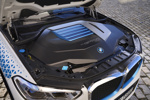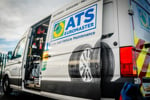Box Telematics predicts that 'wire free' telemetry that can be tailored to a company's individual needs will replace today's traditional vehicle tracking systems.
Company executives say the use of cameras, which can be connected to their own SpotonBox telemetry product, could help alleviate the problem of car crime. Sales and marketing director Mike Langley said: 'Although vehicle tracking has been a positive move that has led to the recovery and apprehension of thieves, the next generation of 'wire free' telemetry puts a face to the criminal.
By connecting a camera to the SpotonBox, images of the thief can be beamed straight down the line to the police or even the fleet manager's screen or video phone. A remotely activated audio message can also warn thieves they are being tracked and images of them committing the crime have been recorded. Not only could this act as a deterrent, it could also be used by the police as evidence to convict criminals.'
He said the same technology could be used to monitor high-value or hazardous loads.
'By training a camera on the load and hooking it up to the telemetry system, an image could be transmitted directly to either the customer or the operator, giving them visual, real-time reassurance that the load is intact,' he added.
The company believes demand for added services and advances in new technology will accelerate the fleet usage of 'wire free' technology.
Langley said: 'Over the last few years vehicle tracking has become a common service used by fleet operators across the UK. Primarily used as a locator device, tracking has also provided useful operational information and added security, aiding the recovery of stolen vehicles. With advances in new technology and demand for added services, what we now know as vehicle tracking has had its day.'
Other developments likely to grow in popularity include the use of panic buttons and collision-monitoring sensors, Langley said.
He continued: 'These are set to become essential lifelines in the future with the potential for companies to link their systems directly into the emergency services network, alerting them immediately in the event of a crisis. These impact sensors can also identify at what speed the vehicle was travelling when the accident occurred, helping to promote safer driving and identifying valuable information for incident evaluation.'
It is not just in the area of crime where such telemetry could be useful. It will have a role in everyday servicing and repair for fleets. Systems that can warn fleets when a vehicle might break down, so preventative measures can be taken, are also possible by linking a system to a car's engine diagnostics computer.















Login to comment
Comments
No comments have been made yet.